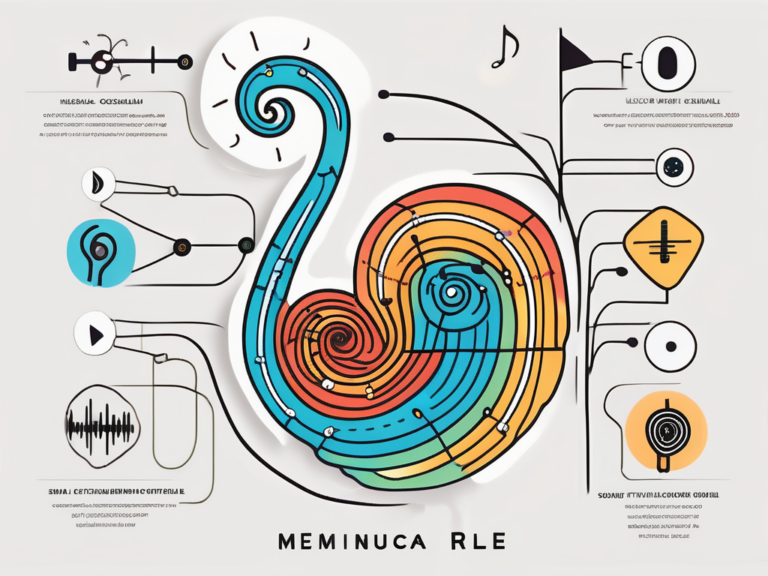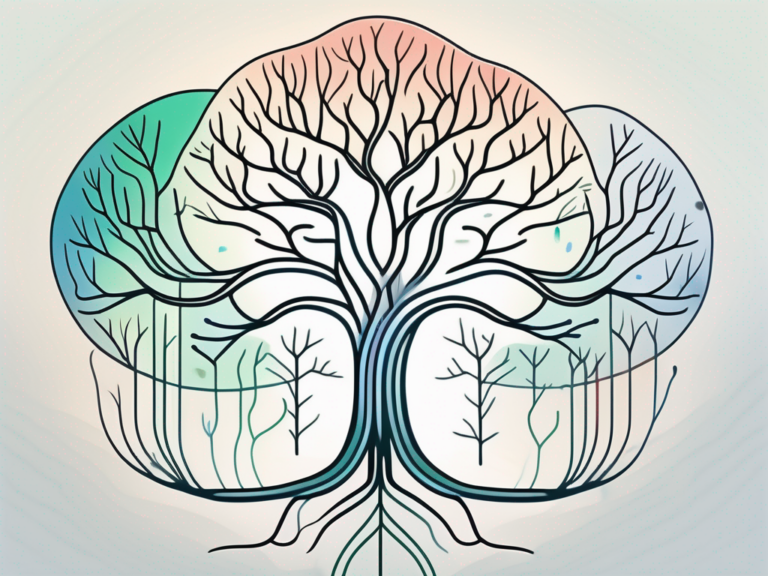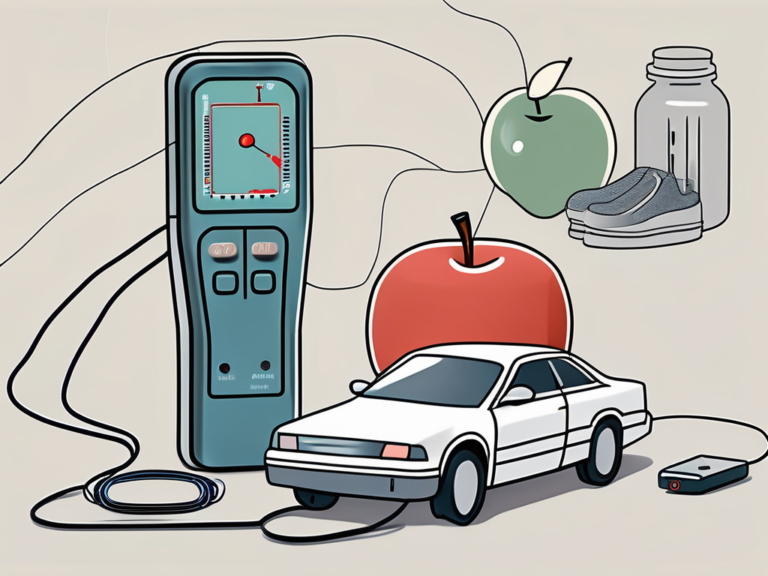Explaining Oculo Motor Nerve to kids
Children, have you ever wondered how your eyes move to see things around you? Well, it all has to do with a special nerve called the oculo motor nerve. In today’s article, we will explore the amazing world of the oculo motor nerve and learn how it helps us see. So, let’s get started!
Understanding the Basics of the Nervous System
Before we dive into the oculo motor nerve, let’s first understand what the nervous system is. Our body is like a big machine, and the nervous system is like the control center that helps everything work properly. It is made up of the brain, spinal cord, and nerves.
The nervous system is an incredibly intricate and vital system in the human body. It is responsible for coordinating and controlling all bodily functions, from simple reflexes like blinking to complex processes like decision-making. This network of organs and specialized cells, known as neurons, allows us to interact with our environment and adapt to changes.
What is the Nervous System?
The nervous system is a complex network of organs and specialized cells called neurons. It helps us sense and respond to the world around us. Without the nervous system, we wouldn’t be able to see, hear, touch, or even think!
Neurons are the building blocks of the nervous system, transmitting electrical and chemical signals throughout the body. These cells communicate with each other through synapses, forming intricate pathways that enable us to perceive stimuli, process information, and generate responses. The brain and spinal cord, known as the central nervous system, serve as the command center, while the peripheral nervous system extends throughout the body, relaying messages to and from the central nervous system.
The Role of Nerves in Our Body
Nerves are like tiny messengers that carry important information between different parts of our body and the brain. They help us move, feel, and even control our organs. Each nerve has a specific job to do, and one of those important nerves is the oculo motor nerve.
The oculomotor nerve, also known as cranial nerve III, plays a crucial role in controlling the movements of the eye. It innervates several muscles that enable eye movement, including the superior rectus, inferior rectus, and medial rectus muscles. This nerve is essential for activities such as tracking moving objects, maintaining focus, and coordinating eye movements for tasks like reading and driving. Damage to the oculomotor nerve can lead to symptoms such as double vision, drooping eyelids, and difficulty controlling eye movements.
Introduction to Oculo Motor Nerve
Now that we understand the nervous system, let’s focus on the oculo motor nerve. This nerve plays a crucial role in our ability to see and control our eye movements. Let’s learn more about it!
The oculo motor nerve, also known as cranial nerve III, is a fascinating component of our complex nervous system. It originates from the midbrain and has both somatic and autonomic components, making it unique among the cranial nerves. This intricate network of nerve fibers is essential for proper eye function and coordination.
What is the Oculo Motor Nerve?
The oculo motor nerve is one of the twelve cranial nerves in our body. It is responsible for controlling the movement of certain muscles in our eyes that help us look around and focus on objects.
Within the oculo motor nerve, there are different types of nerve fibers that innervate various eye muscles, such as the superior rectus, inferior rectus, and medial rectus muscles. These muscles work together to ensure smooth and coordinated eye movements, allowing us to track moving objects and shift our gaze effortlessly.
The Function of the Oculo Motor Nerve
The main job of the oculo motor nerve is to send messages from our brain to the muscles that control our eye movements. It helps us look up, down, left, and right. It also helps our eyes focus and adjust to different distances.
In addition to controlling eye movements, the oculo motor nerve also plays a crucial role in regulating the size of our pupils. The autonomic component of the nerve controls the constriction of the pupil in response to light, a process known as the pupillary light reflex. This automatic adjustment helps to regulate the amount of light entering the eye, ensuring optimal vision in varying lighting conditions.
The Anatomy of the Oculo Motor Nerve
To understand the oculo motor nerve better, let’s explore where it is located in our body and how it is structured.
The oculo motor nerve, also known as the third cranial nerve, is a crucial component of our visual system. It plays a fundamental role in controlling the movement of our eyes and ensuring proper alignment for clear vision.
Where is the Oculo Motor Nerve Located?
The oculo motor nerve starts in our brainstem, specifically in an area called the oculomotor nucleus. From there, it travels through the skull and exits through a small opening at the back of our eye called the superior orbital fissure. This precise pathway allows the nerve to reach the muscles responsible for various eye movements.
Interestingly, the oculo motor nerve is not just limited to the eyes; it also innervates the muscle that controls the size of our pupils, known as the iris sphincter muscle. This dual functionality showcases the intricate and multifaceted nature of this nerve.
The Structure of the Oculo Motor Nerve
The oculo motor nerve is like a complex network of communication, with each axon serving as a messenger carrying vital information from the brain to the eye muscles. These axons are enveloped in a protective sheath called myelin, which helps facilitate the speedy transmission of signals.
Furthermore, the oculo motor nerve contains both somatic and autonomic fibers, highlighting its diverse functions. The somatic fibers control the voluntary movements of the eye muscles, while the autonomic fibers regulate involuntary actions such as pupil constriction. This intricate combination of fibers underscores the oculo motor nerve’s role in maintaining optimal visual function.
The Role of the Oculo Motor Nerve in Vision
Now, let’s explore how the oculo motor nerve works together with our eyes to help us see the world around us.
The oculo motor nerve, also known as the third cranial nerve, is a crucial component in the complex system that enables us to perceive and interact with our visual environment. This nerve plays a fundamental role in controlling the movement of the eye muscles, allowing for precise and coordinated eye movements that are essential for clear vision.
How Does the Oculo Motor Nerve Control Eye Movements?
When we want to look at something, our brain sends signals through the oculo motor nerve to the muscles that control our eye movements. These muscles work like a team, helping us move our eyes in different directions and track objects as they move.
Furthermore, the oculo motor nerve is responsible for coordinating the intricate dance of eye movements that enable us to focus on objects at varying distances. This intricate process, known as accommodation, involves the adjustment of the lens within the eye to ensure that incoming light is properly focused on the retina, allowing for clear and sharp vision.
The Oculo Motor Nerve and Eyelid Opening
Not only does the oculo motor nerve control our eye movements, but it also helps us open our eyelids. The muscles connected to this nerve allow us to blink and protect our eyes from harm.
In addition to its role in eye movements and eyelid control, the oculo motor nerve also contributes to the regulation of pupil size. The pupillary light reflex, governed by this nerve, ensures that the pupils constrict in bright light to reduce the amount of incoming light and dilate in dim light to allow for improved visibility. This automatic adjustment helps to optimize visual acuity in various lighting conditions, enhancing our overall visual experience.
Common Problems with the Oculo Motor Nerve
Although the oculo motor nerve is essential for our vision, sometimes things can go wrong. Let’s explore the problems that can happen with this nerve.
The oculo motor nerve, also known as the third cranial nerve, is responsible for controlling the majority of the eye’s movements. It innervates four of the six extraocular muscles that move the eye in different directions. Additionally, this nerve plays a crucial role in controlling the constriction of the pupil and the elevation of the eyelid. Any damage or disorder affecting the oculo motor nerve can lead to significant visual disturbances and impact daily activities.
What Happens When the Oculo Motor Nerve is Damaged?
When the oculo motor nerve is damaged, it can affect our ability to move our eyes and focus properly. This can result in double vision, droopy eyelids, or even difficulty moving our eyes in certain directions.
Damage to the oculo motor nerve can be caused by various factors, including head trauma, aneurysms, diabetes, or even infections such as meningitis. Depending on the location and extent of the damage, individuals may experience different degrees of oculo motor nerve dysfunction. Prompt diagnosis and treatment are essential to prevent long-term complications and restore optimal eye function.
Symptoms of Oculo Motor Nerve Disorders
Some common symptoms of oculo motor nerve disorders include eye muscle weakness, seeing double, blurred vision, and trouble focusing on objects. If you ever experience these symptoms, it’s important to visit an eye doctor for proper diagnosis and treatment.
In addition to the symptoms mentioned, individuals with oculo motor nerve disorders may also experience ptosis, which is the medical term for drooping eyelids. Ptosis can further impair vision and create a cosmetic concern for some individuals. Proper management of oculo motor nerve disorders often involves a multidisciplinary approach, including neurologists, ophthalmologists, and sometimes surgeons, to address the underlying cause and improve visual outcomes.
Keeping Your Oculo Motor Nerve Healthy
Now that we understand the importance of the oculo motor nerve, let’s talk about how we can keep it healthy and working well.
The oculo motor nerve, also known as the third cranial nerve, is a crucial component of our visual system. It controls the majority of the eye’s movements, including constriction of the pupil and the ability to focus on objects at varying distances. This nerve plays a vital role in our day-to-day activities, such as reading, driving, and even appreciating the beauty of nature.
Importance of Regular Eye Check-ups
One of the best ways to ensure the health of our oculo motor nerve is by visiting an eye doctor regularly. They can perform comprehensive eye exams to assess the functionality of this nerve, detect any abnormalities, and provide early intervention if necessary. By monitoring the health of the oculo motor nerve, we can maintain optimal visual acuity and prevent potential vision problems.
Healthy Habits for Optimal Eye Health
In addition to regular check-ups, there are simple habits we can adopt to keep our oculo motor nerve and overall eye health in great shape. Consuming a balanced diet rich in nutrients like vitamin A, C, and E can support the nerve’s function and promote eye health. Furthermore, wearing sunglasses with UV protection and practicing the 20-20-20 rule (taking a 20-second break every 20 minutes to look at something 20 feet away) can reduce eye strain and support the oculo motor nerve’s efficiency.
So, children, now you know all about the amazing oculo motor nerve and how it helps us see the world around us. Remember to take good care of your eyes and appreciate the incredible work our nervous system does every day. Keep exploring and asking questions, and who knows, maybe one day you’ll become a great scientist or doctor who discovers even more about our fascinating bodies!






